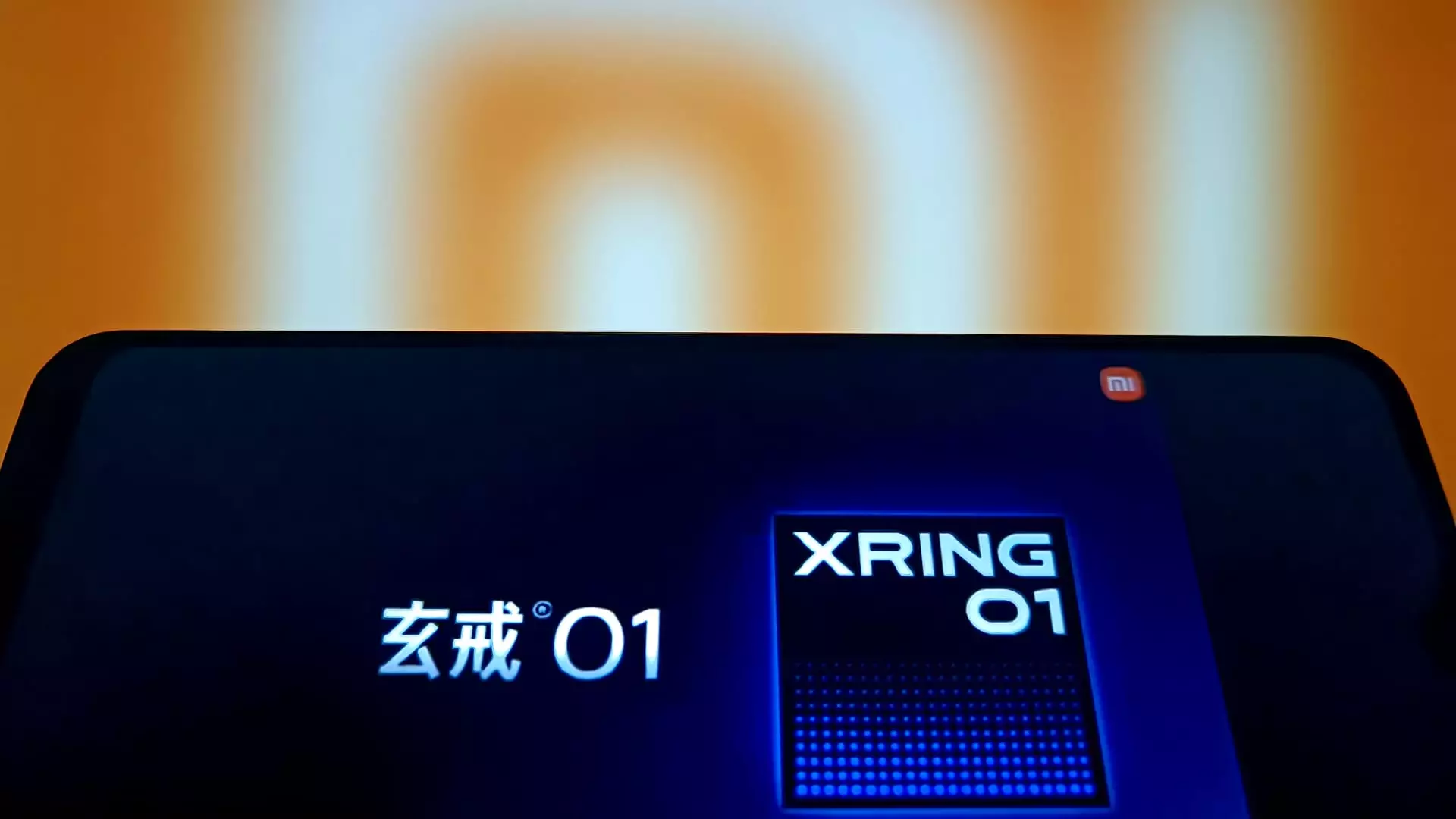Xiaomi is boldly positioning itself against industry giants like Apple by introducing the Xiaomi 15S Pro, a smartphone featuring an advanced chip at a significantly more accessible price point. This strategic move underscores an ongoing trend wherein affordability meets cutting-edge technology, reshaping consumer expectations in the smartphone market. Starting at 5,499 yuan ($764), the new device is not just a triumph of pricing over its competitors but also a clever maneuver to leverage government subsidies that could make it even cheaper for potential buyers.
In stark contrast, Apple’s iPhone 16 Pro kicks off at 7,999 yuan, while the Pro Max variant is priced at an eye-watering 9,999 yuan. Such price differentiation places Xiaomi in a favorable competitive position, particularly in a market increasingly driven by cost-sensitive consumers.
Challenging the Status Quo: The Xring O1 Chip
Central to Xiaomi’s strategy is its new Xring O1 chip, which according to CEO Lei Jun, surpasses Apple’s A18 Pro in several technical specifications. While the validity of these claims remains unverified, the mere assertion serves as a bold statement in the competitive landscape of smartphone processors. Xiaomi appears to be building a narrative that aligns with emerging consumer tastes: a desire for devices that offer high-end performance without the accompanying luxury price tag.
However, it is crucial to acknowledge that the smartphone industry is characterized by an intense arms race in technology—merely launching a cheaper alternative will not guarantee lasting success. Xiaomi must ensure that the Xring O1 chip holds up against performance expectations, especially considering that many consumers remain brand loyal to Apple’s reputation for quality and innovation.
Overcoming Challenges: Xiaomi’s Investment Strategy
A pivotal aspect of Xiaomi’s future lies in its ambitious investment commitments. Lei announced a staggering 200 billion yuan investment in research and development over the next five years, signaling a firm commitment to innovation and chip development. This kind of financial focus is necessary for any tech company that seeks to carve out a lasting niche in the fiercely competitive smartphone arena.
Xiaomi’s proactive stance seems to stem from an acute awareness of evolving market dynamics, exacerbated by geopolitical tensions that restrict access to high-end semiconductor technology from the U.S. This situation has pushed Xiaomi towards vertical integration of its supply chain, a move traditionally favored by tech conglomerates seeking independence from external suppliers.
As the world transitions towards artificial intelligence applications in smartphones, the absence of substantial AI features in the Xiaomi 15S Pro raises questions. While Lei showcased the car-locking capabilities compatible with the device, potential buyers may look for more comprehensive AI functionalities.
The Expansion Plan: Diversifying with Electric Cars
Xiaomi is not resting solely on its smartphone laurels; it is venturing into the electric vehicle market. The launch of the SU7 sedan—a model underselling Tesla’s Model 3 by approximately $4,000—also indicates Xiaomi’s ambition to be a technology leader across multiple sectors. As competition heats up in the EV space, especially from established players in both the automotive and technology industries, Xiaomi is demonstrating its adaptation by diversifying into mobility solutions.
In a world where public perception can make or break a brand, challenges like the SU7 crash that took three lives are frames through which the company is viewed. This necessitates not just a technological response but also a narrative strategy that rebuilds trust among consumers.
The Road Ahead: A Test of Resilience
As Xiaomi gears up for future challenges, including a potential economic downturn or heightened competition, the company is also facing the reality of fluctuating consumer demands and evolving technological norms. Its recent announcement that international markets accounted for nearly 42% of its total revenue signals a strong global strategy, but with that comes the complexity of localized marketing and operational execution.
The upcoming quarterly results on May 27 will undoubtedly bring renewed focus on Xiaomi’s financial health, as observers eagerly await insights into how its diverse offerings, from smartphones to electric vehicles, are performing in unison. The stakes are high, and for Xiaomi, success will come from not merely having a revolutionary product but from fostering a holistic brand ethos that resonates with a broad demographic.

